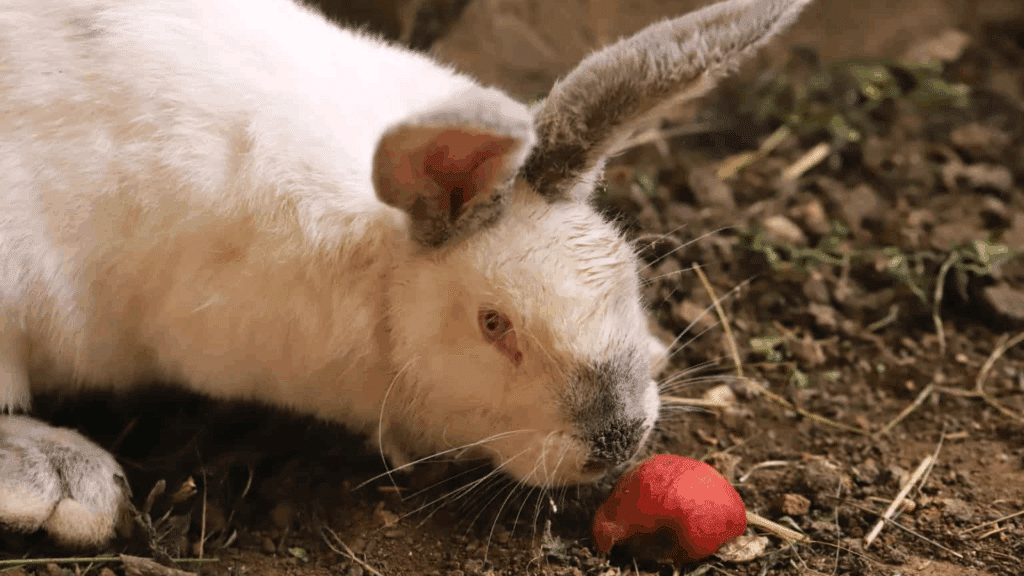It’s easy to smile the first time your cat lets out a tiny sneeze. But if it happens again and again, it’s natural to start wondering what’s going on.
Cats sneeze for many reasons, some simple, others that need a vet’s care.
In this post, we’ll look at:
- The most common causes of frequent sneezing
- How to tell if it’s something minor or a health concern
- Simple ways to help your cat feel better
You don’t need to panic every time your cat sneezes, but it helps to understand the signs.
This guide will walk you through what to watch for, when to worry, and how to keep your cat comfortable and healthy. Let’s get into what might be behind all those sneezes.
What Does It Mean when a Cat Sneezes Often?
When a cat sneezes often, it’s usually their body’s way of clearing out something that’s bothering their nose, like dust, pollen, or a bit of fur.
Sneezing is a normal reflex that helps remove irritants from the nasal passages.
But if it keeps happening or comes with other symptoms like watery eyes, a runny nose, or coughing, it could mean more than a simple tickle.
Frequent sneezing might point to allergies, infections, or even dental problems.
So, while an occasional sneeze is nothing to worry about, regular sneezing is worth paying attention to; it’s your cat’s way of saying something’s not quite right.
Common Reasons Your Cat Might Be Sneezing

Cats sneeze for many reasons, but most are easy to figure out once you know the cause. I’ve listed the most common ones below to help you understand what might be bothering your cat and how to help.
1. Allergies
Just like us, cats can react to dust, pollen, mold, or cleaning products. When they breathe in something irritating, sneezing helps clear it out.
You might notice more sneezing during certain seasons or after cleaning.
If that happens, try using unscented products, wash your cat’s bedding often, and vacuum regularly. I’ve found that keeping windows closed on high-pollen days can make a real difference.
It’s all about paying attention to what triggers the sneezing and adjusting your home environment.
2. Dust and Strong Odors
Cats have very sensitive noses, so even light scents that seem harmless to you can make them sneeze.
Things like perfumes, candles, cigarette smoke, and air fresheners often bother them. When I stopped using strong sprays and switched to mild or fragrance-free options, my cat’s sneezing nearly disappeared.
Try removing scented products one by one to see which one causes the problem. Fresh air helps, too, just avoid drafts or dusty open windows that can add to the irritation.
3. Viral or Bacterial Infections
If sneezing comes with watery eyes, coughing, or a runny nose, your cat may have a respiratory infection. These are common, especially among cats that spend time outdoors or interact with other cats.
Infections can spread through shared food bowls or grooming. I’ve learned that early vet care matters because untreated infections can turn into chronic issues.
Your vet may suggest medication, rest, and keeping your cat’s space warm and quiet while they recover.
4. Foreign Objects
Sometimes, a small bit of litter, grass, or fur can get stuck in your cat’s nasal passage.
Sneezing is their way of trying to push it out. It often happens suddenly and repeatedly, sometimes with pawing at the face. I once saw my cat sneeze nonstop until a tiny speck of dust cleared.
If it continues or your cat seems uncomfortable, it’s safest to let a vet check. Trying to remove something from their nose on your own can cause harm.
5. Dental Issues
It might sound strange, but tooth and gum problems can cause sneezing too. The roots of a cat’s upper teeth sit close to the nasal passages, so an infection can spread and cause irritation.
If you notice drooling, bad breath, or difficulty eating, it could be connected. I’ve had my vet explain how untreated dental infections can lead to sinus trouble.
Regular check-ups, brushing your cat’s teeth, and dental treats can all help prevent this from becoming a bigger problem.
Understanding Normal vs. Excessive Sneezing in Cats
It’s normal for cats to sneeze every now and then, just like we do. But when sneezing becomes frequent or comes with other signs, it may point to something more serious.
Below is a quick guide to help you tell the difference.
| Type of Sneezing | What It Means | What You Should Do |
|---|---|---|
| Occasional Sneezing | Happens once in a while, often from dust or a light irritant. | Nothing to worry about. Keep the area clean and watch for changes. |
| Frequent Sneezing | Happens several times a day or lasts for more than a few days. | Check for triggers like perfume, smoke, or litter dust. Reduce exposure. |
| Sneezing With Discharge | Runny nose or watery eyes along with sneezing. | It might be an infection. Visit your vet for a check-up. |
| Sneezing With Other Symptoms | Includes coughing, loss of appetite, or tiredness. | It could be a sign of illness. Get professional care as soon as possible. |
| Sudden Sneezing Fits | Continuous sneezing for several minutes or pawing at the face. | A foreign object could be stuck. Contact your vet immediately. |
How to Observe Your Cat’s Sneezing Patterns?
Noticing when and how your cat sneezes can tell you a lot about what’s causing it. Small details, like where it happens or what’s around, can help you find the trigger faster.
Pay attention to when your cat sneezes, such as during play, after grooming, or while resting.
Notice where it happens, near the litter box, food bowl, or windows, and check for odors or sprays in the air, like perfume, cleaning products, or candles.
See if sneezing increases after outdoor time or when windows are open, and watch for patterns such as seasonal changes or after cleaning.
Also, keep an eye on other symptoms like watery eyes, coughing, or a runny nose.
Writing down these details and sharing them with your vet can help pinpoint the cause and get your cat the right care sooner.
Signs that Sneezing Might Indicate a Health Problem
Sometimes sneezing is more than just a reaction to dust or smell. If your cat shows other signs along with sneezing, it could mean a health issue that needs attention. These are some signs to watch for:
- Nasal discharge that’s thick, yellow, or green instead of clear.
- Watery or red eyes that stay teary or crusted.
- Coughing or wheezing that happens along with sneezing.
- Loss of appetite or refusing favorite foods.
- Tiredness or less playfulness than usual.
- Pawing at the nose or face, showing discomfort.
- Fever or warm ears can signal an infection.
- Sneezing fits that last several minutes or return often.
If you notice more than one of these symptoms together, it’s best to contact your vet for a closer look.
When to Take Your Cat to the Vet?
If your cat’s sneezing lasts for several days, gets worse, or comes with other signs like nasal discharge, coughing, or loss of appetite, it’s time to visit the vet.
Persistent sneezing could mean an infection, a dental problem, or something stuck in the nose.
The vet may run tests such as a physical exam, nasal swab, or X-ray to identify the cause. Early care makes a big difference; it can stop a small issue from turning into something more serious.
I’ve learned that quick attention not only helps your cat feel better faster but also prevents stress and discomfort for both you and your furry friend.
Tips to Keep Your Cat’s Environment Clean and Safe

A clean and safe space can make a big difference in how often your cat sneezes. Simple habits help reduce irritants and keep your cat’s breathing clear and healthy. These are a few tips that you can try:
- Clean the litter box daily to prevent dust and odor buildup.
- Use unscented litter and cleaners since strong smells can irritate your cat’s nose.
- Vacuum and dust often to remove pollen, fur, and debris.
- Keep the air fresh and dry by using an air purifier or dehumidifier.
- Avoid smoking indoors or using scented candles and sprays.
- Wash bedding and toys regularly to reduce dust and bacteria.
- Ensure good ventilation to keep your home’s air quality comfortable and safe.
Conclusion
Most of the time, cat sneezing isn’t something to panic about; it’s often caused by dust, light allergies, or minor irritants.
Still, staying alert and paying attention to changes in frequency or added symptoms can make all the difference.
I’ve found that quick observation and simple care routines, like keeping your home clean and reducing strong odors, go a long way in keeping your cat healthy.
If sneezing continues or other signs appear, a vet visit ensures your cat gets the right care early.
At the end of the day, your attention, patience, and love are what help your cat stay happy, comfortable, and safe. A little care now can prevent big worries later.








